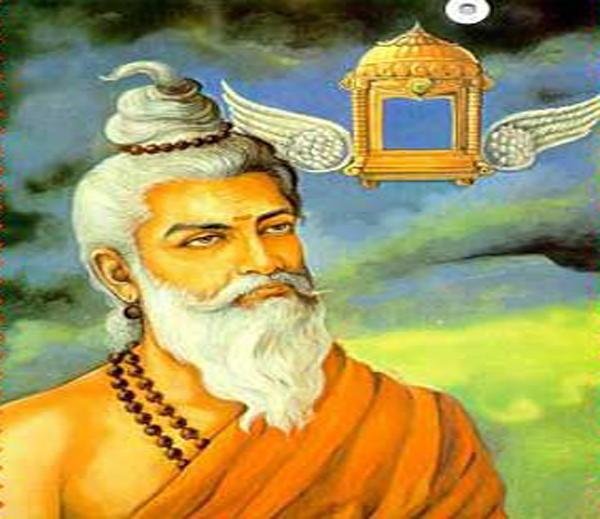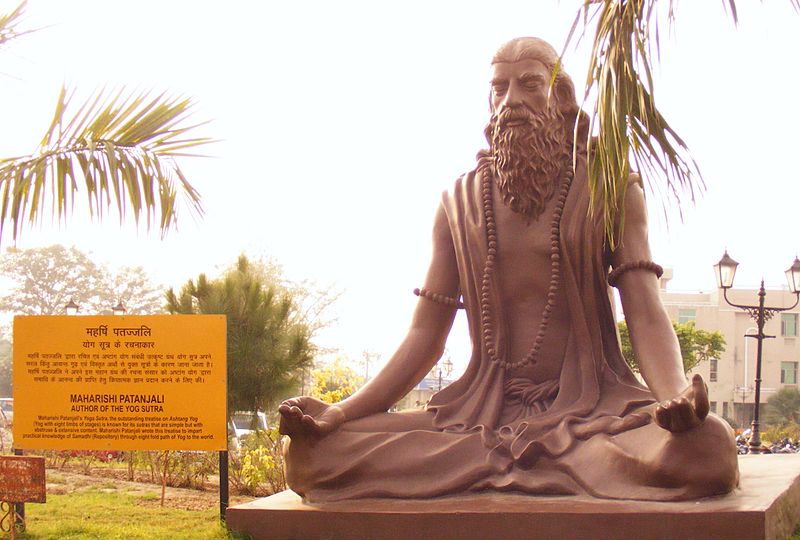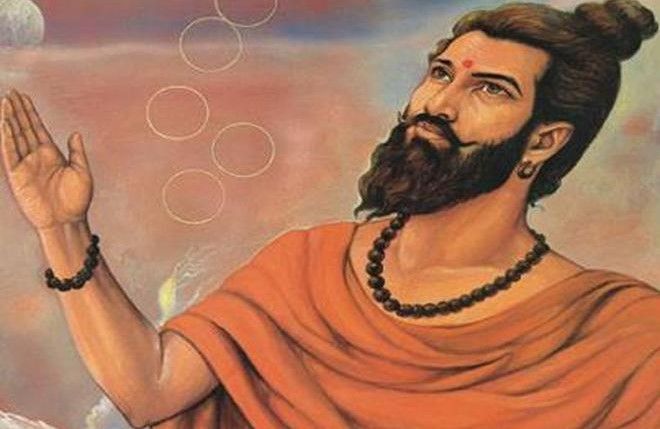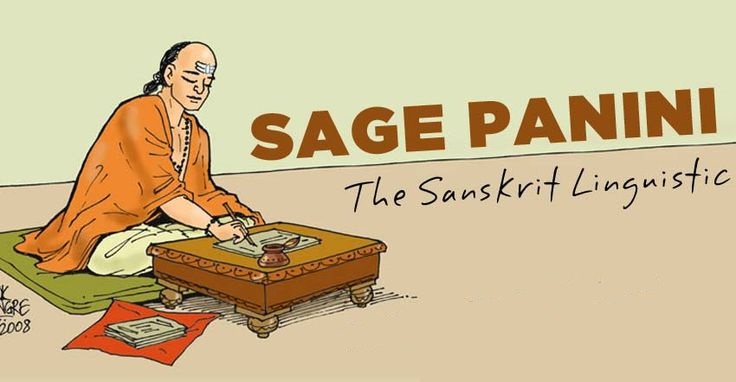Friday, June 28, 2019
Thursday, June 27, 2019
ancient sages rishis.
The modern world likes to take credit for many technological inventions, but we fail to mention that often many of these “discoveries” are nothing but re-inventions based on knowledge our ancestors possessed long ago.
In ancient times, India was one of the most advanced nations in the world. India has made many valuable contributions to the world. Centuries ago Indian sages had the kind of knowledge which many modern scientists lacks. Many Indian sages made discoveries that no one could think of back in those times.
In this top list we present some of the most prominent sages from India who made some mind-blowing contributions.
1. Aryabhatta (476–550 CE)
Aryabhatta was a master Astronomer and Mathematician, born in 476 CE in Bihar. In 499 CE, he wrote a text on astronomy and an unparalleled treatise on mathematics called Aryabhatiya. He formulated the process of calculating the motion of planets and the time of eclipses. Aryabhatta was the first to proclaim that the earth is round, it rotates on its axis, orbits the sun and is suspended in space – 1,000 years before Copernicus. He is also acknowledged by many as the first person who calculated the value of Pi. And above all, his most spectacular contribution was the concept of zero without which modern computer technology would have been non-existent.
2. Bhaskaracharya (1114–1185 CE)

Bhaskaracharya’s mathematical works called “Lilavati” and “Bijaganita” are considered to be unparalleled. Bhaskaracharya was the first to discover gravity, 500 years before Sir Isaac Newton. In the “Surya Siddhant” he makes a note on the force of gravity:
“Objects fall on earth due to a force of attraction by the earth. Therefore, the earth, planets, constellations, moon, and sun are held in orbit due to this attraction.”
Bhaskara accurately calculated the time that earth took to revolve around the Sun as 365.2588 days that is a difference of 3 minutes of modern acceptance of 365.2563 days. He is also considered to be a pioneer in the field of algebra.
3. Maharshi Bhardwaj (? BCE)

Maharshi Bhardwaj was one of the greatest Hindu sages whose accomplishments are detailed in the Puranas. His works includes astonishing and outstanding discoveries in aviation science, space science and flying machines. He has described three categories of flying machines: (1) One that flies on earth from one place to another. (2) One that travels from one planet to another. (3) And one that travels from one universe to another. It is said that his work on the art of flying is unparalleled.
4. Aacharya Charak (~6th – 2nd century BCE ?)

Charaka Monument in the Pantanjali Yogpeeth Campus, Haridwar, India
Acharya Charaka has been crowned as the Father of Medicine. His renowned work, the “Charak Samhita”, is considered as an encyclopedia of Ayurveda. He has described the medicinal qualities and functions of 100,000 herbal plants. His research on human anatomy, embryology, pharmacology, blood circulation and diseases like diabetes, tuberculosis is simply mindblowing. He was a strong proponent of the influence that diet has on the mind and body.
5. Sushruta (~1200-600 BCE ?)

A statue dedicated to Suśruta at Haridwar
Indian surgeon Sushruta is credited as being the founding father of surgery. In his treatise Sushrut Samhita, he has described over 300 surgical procedures and 125 surgical instruments, including scalpels, lancets, needles, catheters and rectal speculums; mostly designed from the jaws of animals and birds. He has also described a number of stitching methods; the use of horse’s hair as thread and fibers of bark. His research was pioneering not only in the field of plastic surgery but he also made some groundbreaking contributions to the field of anesthesia. Interestingly, even before Hippocrates, he had prescribed an ethical code for medical practitioners.
6. Patanjali (? BCE)

Patañjali – Modern art rendering in Patanjali Yogpeeth, Haridwar
He gave the World the art of Yoga and showed how Yoga can improve not only one’s physical health but also mental health of a person. The life history of Patanjali is full of legends and contradictions. There are no authentic records regarding his birth.
7. Acharya Kanad (600 BCE)

In modern times, John Dalton has been credited as the inventor of the atomic theory. However, he was not the first one to discover the concepts of atoms. About 2,600 years ago, Acharya Kanad, an Indian philosopher and a great thinker far ahead of his time, developed what we today call the atomic theory. He was one of the first persons in the world who talked about objects and elements that create them. He gave the concepts of atoms and how they bond together to form larger particles. He studied atomic theory and found the way atoms move and react with each other.
8. Kapila (6th -7th century BCE)

Considered as the father of Cosmology, he gave the world the renowned Samkhya school of thought. He lived around 6th or 7th century BCE. He was the first person to talk about the human soul and the human spirit. He was the one who pointed out that both matter and spirit are equally important.
9. Chanakya (371 – 283 BCE)

Chanakya or Vishnu Gupta or Kautilya was the teacher of Chandragupta Maurya. He served as a minister in the court of Chandragupta and Bindusara. He authored the ancient Indian political treatise called Arthasastra. Chanakya is considered as the pioneer of the field of economics and political science and his work is thought of as an important precursor to Classical Economics. Chanakya’s works predate Machiavelli’s by about 1,800 years. Chanakya was a teacher in Takshashila, an ancient centre of learning.
10. Varahamahira (505–587 CE)
Varahamihira proposed that the Moon and planets are lustrous not because of their own light but due to sunlight. In the Brhat Samhita he has revealed his discoveries in the domains of geography, constellation, science, botany and animal science. Varahamihira in 550 AD have described a large number of comets in the Brhat Samhita. He also predicted the presence of water on Mars. Like Aryabhata before him, he declared that the earth was spherical. In his treatise on botanical science, Varahamihir presents cures for various diseases afflicting plants and trees.
11. Nagarjuna (150 – 250 CE)

Known as the second Buddha, he had discovered the alchemy of transmuting base metals into gold. He was appointed as Chancellor of the famous University of Nalanda. Interestingly, he is also considered as one of the most important Buddhist philosophers after Gautam Buddha.
12. Panini (~6th–4th century BCE)

Panini is known for his Sanskrit grammar, particularly for his formulation of the 3,959 rules of Sanskrit syntax and grammar known as Ashtadhyayi. Panini’s grammar is the world’s first formal system, developed well before the 19th century innovations of Gottlob Frege and the subsequent development of mathematical logic. In designing his grammar, Panini used the method of “auxiliary symbols”, in which new affixes are designated to mark syntactic categories and the control of grammatical derivations. This technique, rediscovered by the logician Emil Post, became a standard method in the design of computer programming languages.
13. Brahmagupta (6th – 7th century CE)

Brahmagupta was the director of the astronomical observatory of Ujjain, the center of Ancient Indian mathematical astronomy. He was the first to use mathematics to predict the positions of the planets, the timings of the lunar and solar eclipses. In his methods of multiplication, he used place value in almost the same way as it is used today. He introduced negative numbers and operations on zero into mathematics. Brahmagupta was the first person in history to see zero as a number with its own properties and said that zero divided by any other number is zero.
fear & desire
the romance of an ideal couple from their first meeting to their feigned sulking in their married life. Each couplet is the utterance of the hero or the heorine in a particulr emotional situation. The various moods of the lovers are dramatically presented in them. HE: Her feminine grace is simple but terrible. Her eyes seem to kill those that look at them. I knew not the God of death till now. Now I see him in the eyes of this graceful lady. Modesty adorns her; that is enough; of what use are all other jewels to her. She has two looks, one causes pain and the other is the cure for it. When the eyes of the lovers express agreement, the words of the mouths are of no use. The remedy for a disease is different from the disease; but in this case she is both the ailment and the cure for it. Where did she get this fire that burns at a distance and cools when nearby? The love between us is as great as the bond between the body and the soul. I feel like living when she is by my side, and like dying when she leaves me. SHE: My lover is so subtle that he never departs from my eyes and is never hurt by my winking. Since he abides in my eyes, I am afraid of painting them lest he is hidden. He is in my heart, so I am afraid of eating anything hot as it would affect him. The foolish laugh at me not knowing the pangs of my love; they have not yet suffered as I do. It was only one day that I met him; but the slander is so widespread as the talk about an eclipse of the moon. The slander is the manure and the reproach of the mother the water for this anguish of love. SHE: Tell me anything but parting; if it is only that, tell it to those who will survive your separation. If there is parting even in the case of such an understanding lover.
manu law
M anu is regarded as one of the greatest legal and social philosophers of the world. In the world of jurisprudence and sociology, the Institutes of Manu are more ancient than those of Justinian in Roman Law and are more far-reaching and pervasive and more ancient than the laws of Solon or Lycurgus. The origin of Manu is lost in mystery and antiquity In the Manusamhita (I. 34.35) it has been said that being desirous of creating mankind, Manu performed very difficult religious austerities and created ten great rishis or sages who visualised the entire evolution of human destiny across ail time and space. These seers were Marichi, Atri, Angiras, Pulastya, Pulaha, Kratu, Prachetas, Vasistha, Bhrigu and Narada. The Code of Manu from the theological aspect is regarded as emanating from God, the Lord of creation. It was Manu who first expressed this divine revelation to mankind. He is, therefore, regarded as the first lawgiver of the world. He successfully taught Marichi and other holy sages including Bhrigu. In this celebrated Preface to the Institutes or Ordinances of Manu, published in 1794, Sir William Jones described him as originator of laws in these terms: Law in all its branches, which the Hindus firmly believe to have been promulgated in the beginning of time by Manu, son or grandson of Brahma, or, in plain language, the first of created beings, and not the oldest only, but the holiest of legislators; a system
Manu's great contribution to Indian culture and to the world as a social and legal philosopher may now be broadly assessed. It is laid down in the Code of Manu that there are four sources of all laws. The first is the Vedas, the immanent and the eternal laws of the Universe. They provide the universal elements of all laws. The second is the Smriti which etymologically means, "carried down through remembrance or memory". These Smritis are the principal source of lawyers' laws. They, however, also contain discourses on subjects other than positive law. The Smritis are to be distinguished from the Srutis, which contain very little of lawyers' law but are more concerned with religion, spiritual knowledge and liberation. The Srutis comprise the four Vedas, the six Vedangas and the Upanishads. The Dharmasastra is the expression often used to designate the Smriti alone to emphasise their practical importance. Therefore, Manu says, "by Sruti is known the Vedas and by Smriti the Dharmasastra." Manu's greatest contribution was the concept of law as Dharma. Etymologically, Dharma is what upholds and sustains. Law is, therefore, that which sustains and notdestroys. Law is what unites and binds and not what separates. In that sense, Manu anticipated by centuries the modern sociological school of jurisprudence. The third source of law, according to Manu, is custom or approved usage. Customs or approved usages represent the social wisdom and the social experience of the community. Manu is practically the first legal philosopher to indicate that much of the law is custom regulating society. This also has a sociological connotation for law but is more modern than the Justinian concept of law as the command of human superior. According to Manu, the two characteristics of approved custom must be sadachara and sistachara. In other words, custom to become law must not be immoral and must be generally acceptable as a binding discipline. The fourth source of law, according to Manu, is "what is agreeable to one's soul or good conscience." Here again Manu was anticipating equity and good conscience as a source of law. It may come through sadachara or sistachara, but it is also an evolving or developing conscience as the human society progresses from one level to another. These four sources of law, according to Manu, will be found in the Manusmriti ii, 12. Manu can be regarded as the first legal and social philosopher of the world to point out, analyse and lay down the sources of law. One very distinctive contribution of Manu to the theory of law and its practice is the idea of relativity of law according to time and country. Law includes both universal and local features. Its universal elements are inexorable, while its local elements are flexible. It is astonishing to find in so ancient a Code like the Institutes of Manu or the Dharmasastra the detailed description of the Forms of Action in Courts of Law. In the Manusmriti viii-2-7, this is the description which occurs:
obedience.
Tiruvalluvar recognized the merits
of ascetic life butpaid glowing tribute to household
life. Perhaps onaccount of this, people rejoice in
telling stories about themarried life of the author and the
great qualities of hiswife, Vasuki. She is said to have
had an artless simplicity
and unquestioning obedience to her
husband in
her daily life. According to the stories, the
couple lived a long
Subscribe to:
Posts (Atom)

